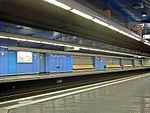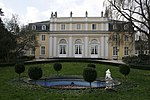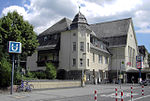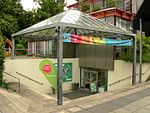The siege of Godesberg, 18 November – 17 December 1583, was the first major siege of the Cologne War (1583–1589). Seeking to wrest control of an important fortification, Bavarian and mercenary soldiers surrounded the Godesberg, and the village then of the same name, now Bad Godesberg, located at its foot. On top of the mountain sat a formidable fortress, similarly named Godesburg, built in the early 13th century during a contest over the election of two competing archbishops.
Towering over the Rhine valley, the Godesburg's strategic position commanded the roads leading to and from Bonn, the Elector of Cologne's capital city, and Cologne, the region's economic powerhouse. Over time, the Electors strengthened its walls and heightened its towers. They added a small residence in the 14th century and the donjon (also called a Bergfried or keep) developed as a stronghold of the Electoral archives and valuables. By the mid-16th century, the Godesburg was considered nearly impregnable and had become a symbol of the dual power of the Prince-electors and Archbishops of Cologne, one of the wealthiest ecclesiastical territories in the Holy Roman Empire. The Cologne War, a feud between the Protestant Elector, Gebhard, Truchsess of Waldburg, and the Catholic Elector, Ernest of Bavaria, was yet another schismatic episode in the Electoral and archdiocesan history.
The Godesburg came under attack from Bavarian forces in November 1583. It resisted a lengthy cannonade by the attacking army; finally, sappers tunneled into the basalt core of the mountain, placed 680 kilograms (1,500 lb) of powder into the tunnel and blew up a significant part of the fortifications. The explosion killed many of the defending troops, but the resulting rubble impeded the attackers' progress, and the remaining defenders continued to offer staunch resistance. Only when some of the attackers entered the castle's inner courtyard through the latrine system were the Bavarians able to overcome their opponents. The Godesburg's commander and some surviving defenders took refuge in the keep; using prisoners held in the dungeons as hostages, the commander negotiated safe passage for himself, his wife and his lieutenant. The others who were left in the keep—men, women and children—were killed. Nearby Bonn fell to the Bavarians the following month.











